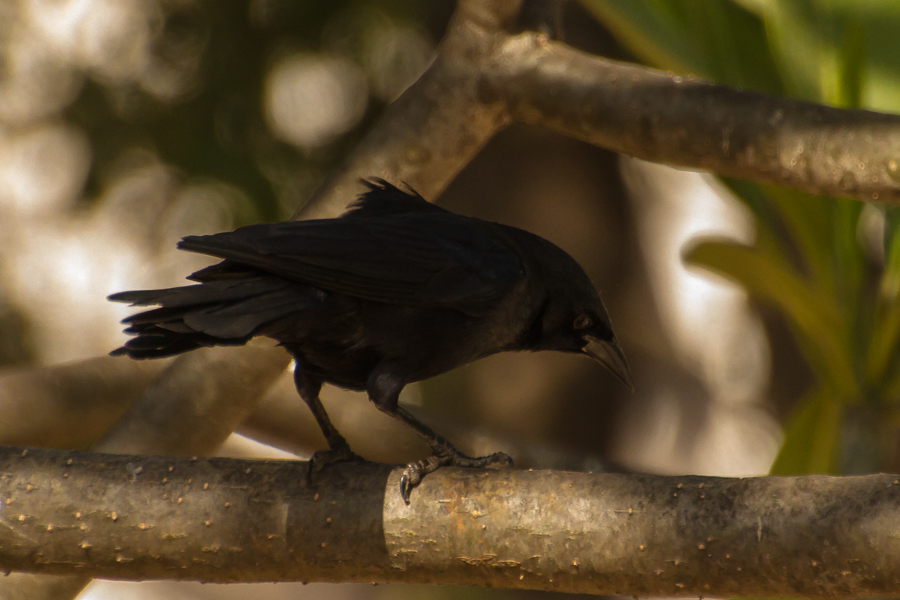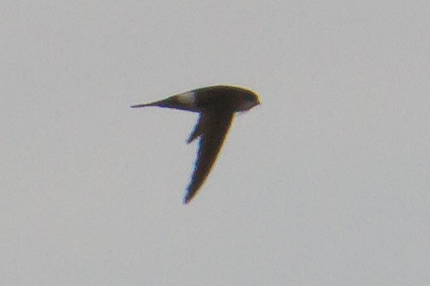#803-#805 in Old Havana
We arrived in Cuba today almost before we left Miami due to the difference in Daylight Savings Time (though this won’t be posted until some time later due to the lack of Wifi access in Cuba). Of course I got held up by the second most annoying customs inspection I’ve ever had to go through. The inspector looked at almost every piece of optics I had, most of which I had to explain to him. I had to put the spotting scope together and show him how it worked. He took photos of most of it. I’m not sure why. He was very impressed with my 17″ MacBook Pro. Apparently even in Cuba, Apple products are considered cool. Although I was the first one in our group through the metal detector (not sure why, but in Cuba they X-Ray you coming off the plane; looking for contraband I guess) I was the last one to exit customs. Still not as bad as flying back into Miami though.
But we finally got to the hotel around 11:30. The drive from the airport was interesting: Cuba certainly isn’t a rich country but somehow it doesn’t look like a poor one either. In many ways, it looks in better shape than parts of the United States. Poor but not rundown or abandoned. Many, perhaps most, buildings look a little shabby, but that’s common in any tropical country where you need to paint and repair annually or the jungle takes over. It took me a while to put my finger on the real difference I saw between Cuba and other places I’ve visited in the developing world: everyone’s in the same boat. In Panama or Puerto Rico, and to a lesser extent Beijing, there’s an obvious contrast between quite wealthy people and extremely poor people. I don’t see that here because I don’t see wealthy people, or big houses, or apartments, or mansions, pretty much anywhere we’ve been so far. We’ll see if this holds up as more of the country is explored. It’s often in rural areas where most tourists don’t go (but birders do) where you find the deepest poverty.
We grabbed a carb-heavy lunch at a local restaurant, and afterwards explored old Havana. Even before lunch I caught a glimpse of my first lifer, #803, Cuban Blackbird. on top of a building. However I didn’t get a good luck, and couldn’t swear it wasn’t a Greater Antillean Grackle. But we found several again after lunch with much better looks.

Old Havana itself is quite pretty. It’s quite reminiscent of the French Quarter in New Orleans and Old San Jose in Puerto Rico. No coincidence: they’re all examples of Spanish colonial archicteture in the New World. However thanks to the Revolution and 50 years of embargo, Old Havana is much closer to the original than the other two examples I’ve seen. On the one hand it’s more rundown. On the other hand it’s almost (though not quite completely) free of T-shirt shops and Starbucks and other international brands.
In fact, there’s almost no advertising at all; only a few basic signs on shops. It took me a while to notice what was missing, but once I did it made a typical American or European city look garish and tasteless by comparison. Havana isn’t rich, but it’s dignified. The only billboards are government propaganda (Tenemos y tenederos socialismo!) but there isn’t any more of that than in any typical American city. It’s just that in our swamp of commercialism the government propaganda is such a tiny fraction of available space it barely registers on our consciousness.
Old Havana is not a park, but it’s got a little green space and in one square we found Rock Pigeons by the dozens, Eurasian Collared Doves, Cuban Blackbirds, Northern Mockingbirds (Damn, I was hoping for Bahamas Mockingbird), House Sparrows, Yellow-throated Warbler, Palm Warbler, and #804, Loggerhead Kingbird, perched on a television aerial on top of a nearby building:

The Loggerhead Kingbirds were far away and hard to distinguish from other flycatchers; but they’re common here and I should get a lot more practice with them throughout the trip.
From there we walked over to the water and out a kilometer or so. We added Laughing Gull and Royal Tern to the day list, but the real treat was toward the end where we found #805 Antillean Palm Swift:

By this point the clouds were looking ominous, so we headed home. But in a Lion King themed playground along the way, I spotted a Red-legged Thrush; and this was followed by Common Ground-Dove and another Palm Warbler, as well as a Yellow Warbler I never got on. ~20 species including three lifers, not bad for a leisurely walk in the middle of a major city. I later learned that I had missed both Red-shouldered and Tawny Blackbirds. I think I might have had one of those at one point, but I didn’t get a clear look at it; and afterwards all the blackbirds I could find were Cubans. Both of those species should reappear later in the trip, so no major loss, but I do need to pay more attention to blackbirds around here.
Tomorrow we drive west into Pinar del Rio, and a couple of national parks.

April 14th, 2012 at 12:41 PM
everyone’s in the same boat
Yes, indeed; that was the promise of communism (actually, the promise was to put everyone in the same rich boat, but that didn’t happen: see below), and Cuba is the last surviving communist country (China is Communist In Name Only).
The fundamental difference between societies is in what natural resources they have and what they do with them. There are four basic solutions:
1) Third World solution: Allow a few to grab control of the resources, leaving everyone else to try to live on starvation wages (even if the wages are nominally high, rent payments on the resources almost match them). The 1% (really much less) run everything, and the 99% are kept quiet by hunger and disease.
2) First World solution: The same, but with a whole mess of compensating privileges (from welfare to the home mortgage exemption) for the 99% that keep them quiet with bread and circuses, which they can now (barely) afford. Conservatives are trying to change this solution to be the same as #1.
3) Communist solution: Don’t allow anyone to grab natural resources. This also mostly prevents entrepreneurship, because the resources end up being administered by a sleepy and non-competitive bureaucracy. Although political control is still in the hands of the 1%, they live only marginally better than the 99%.
4) Georgist solution: Allow a few to grab control of the natural resources, but make them pay the 99% heavily (in the form of resource-value taxes) for the loss of their equal right to use the resources. This one really does have the potential to make everyone rich, and some parts of it are in effect in Pittsburgh (which has a much less run-down city core than most American cities, because it doesn’t pay to hold land idle there — property taxes on vacant land and built-up land are almost the same) and Taiwan (ditto throughout the country).